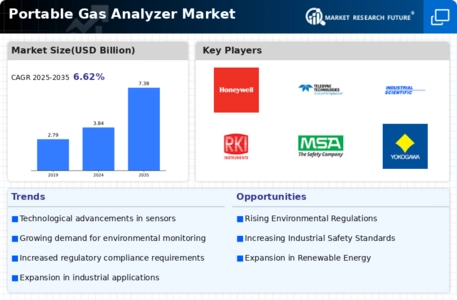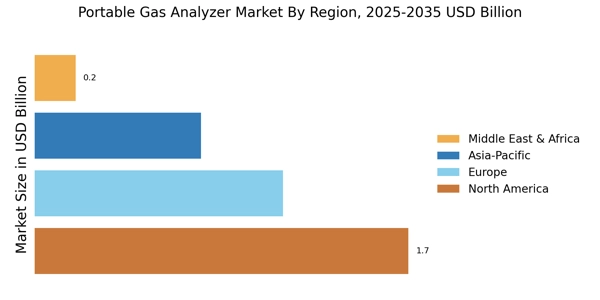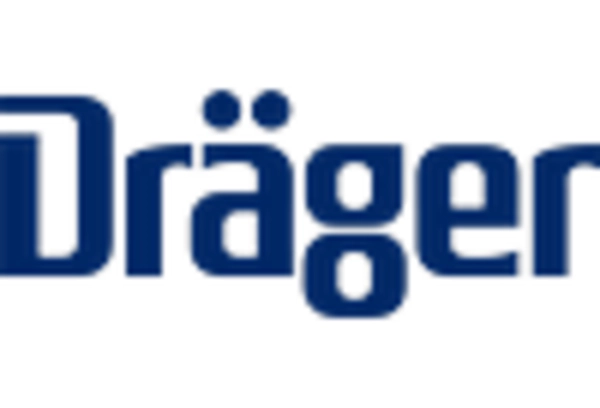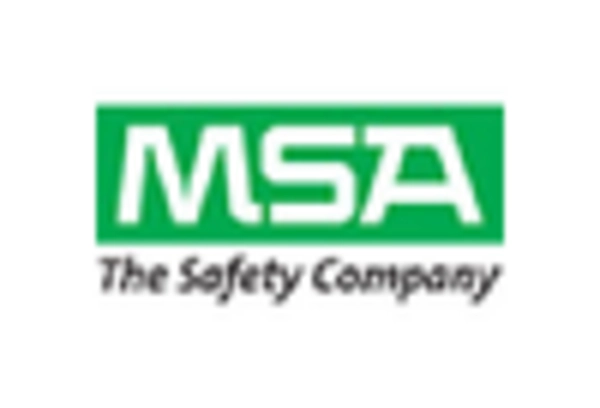Emerging Markets and Economic Growth
The Portable Gas Analyzer Market is poised for growth due to emerging markets and overall economic development. As countries industrialize and urbanize, the demand for effective gas monitoring solutions is increasing. Emerging economies are investing in infrastructure and industrial projects, which in turn drives the need for portable gas analyzers to ensure safety and compliance with environmental regulations. The market is expected to grow at a robust pace, with emerging markets contributing significantly to this expansion. This trend suggests that the Portable Gas Analyzer Market will likely see a diversification of applications and increased competition as new players enter the market.
Rising Awareness of Environmental Issues
The Portable Gas Analyzer Market is benefiting from the rising awareness of environmental issues and the need for sustainable practices. As concerns about air pollution and climate change intensify, industries are increasingly adopting measures to monitor and reduce emissions. Portable gas analyzers play a crucial role in this effort by providing accurate measurements of harmful gases, thus enabling companies to implement effective environmental management strategies. The market is projected to witness a growth rate of approximately 7% in the coming years, as more organizations recognize the importance of environmental responsibility. This heightened awareness is likely to drive the demand for portable gas analyzers, further solidifying their role in the Portable Gas Analyzer Market.
Regulatory Compliance and Safety Standards
The Portable Gas Analyzer Market is significantly influenced by stringent regulatory compliance and safety standards across various sectors. Governments and regulatory bodies are imposing strict guidelines to monitor air quality and ensure workplace safety, particularly in industries such as oil and gas, manufacturing, and environmental monitoring. The need for compliance with these regulations drives the demand for portable gas analyzers, as they provide essential data for monitoring hazardous gases. In recent years, the market has seen a notable increase in the adoption of these devices, with a reported growth rate of around 5% annually. This trend indicates that as regulations become more rigorous, the Portable Gas Analyzer Market will likely expand to meet the growing need for compliance.
Increased Demand from Industrial Applications
The Portable Gas Analyzer Market is experiencing increased demand from various industrial applications, including petrochemical, manufacturing, and waste management sectors. These industries require precise gas measurements to ensure operational efficiency and safety. The growing trend of automation and the need for real-time monitoring are propelling the adoption of portable gas analyzers. Recent data indicates that the industrial segment accounts for a significant share of the market, with expectations of continued growth as industries seek to enhance their monitoring capabilities. The Portable Gas Analyzer Market is likely to expand as more companies recognize the value of these devices in maintaining safety and compliance.
Technological Advancements in Portable Gas Analyzers
The Portable Gas Analyzer Market is experiencing a surge in technological advancements, which are enhancing the capabilities and functionalities of these devices. Innovations such as miniaturization, improved sensor technologies, and integration with mobile applications are making gas analyzers more user-friendly and efficient. For instance, the introduction of wireless connectivity allows for real-time data transmission and remote monitoring, which is increasingly sought after in various sectors. The market is projected to grow at a compound annual growth rate of approximately 6.5% over the next few years, driven by these advancements. As industries seek more precise and reliable measurements, the demand for advanced portable gas analyzers is likely to increase, further propelling the Portable Gas Analyzer Market.


















Leave a Comment